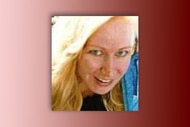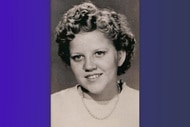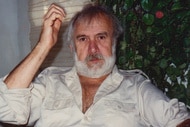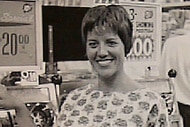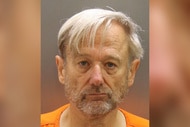‘Cold Justice’ Helps Texas Sheriffs Make Arrest In Murder Of Woman 'Scalped By Her Killer'
"We're scared of him," a suspect's nephew told the "Cold Justice" team.
On May 21, 2019, Rhonda Richardson, a 59-year-old Texas corrections officer and mother, went searching for her lost dog. She was found dead the next day in a national forest adjacent to her home.
On “Cold Justice,” airing Saturdays at 8/7c on Oxygen, former prosecutor Kelly Siegler and investigator Steve Spingola were in Texas to investigate the case. They joined forces with local law enforcement from San Jacinto Sheriff’s Office, including Sheriff Greg Capers, St. Gary Sharpen, and Sgt. Omar Sheikh.
Although local resident Robert Dale Clary, a registered sex offender who had been in and out of prison, was an early suspect, the case was still open.
Part of the problem is it was unclear what killed Richardson, a devoted mother and grandmother who lived alone with her dogs: Due to extreme decomposition Richardson’s cause of death could not be determined.
“But it looks like she was scalped by her killer,” said Spingola.
In an atypical twist, Siegler and Spingola disagreed on the case. Like local sheriffs, he believed the victim was murdered. However, Siegler considered the possibility that Richardson, who was hypertensive and overweight, had suffered a heat-related heart attack and was preyed upon by a coyote or other animal.
The investigators met with Richardson’s daughter, Amanda Ramkissoon. She said her mother was getting ready to retire and that she loved spending time with her grandchildren.
She was flooded with feelings discussing her mother's case. “I’m happy somebody is looking into it and sad to be reliving it,” Ramkissoon said.
Here's what the team did know when they started the investigation: On May 22, Richardson was found clothed and face down in the woods about eight feet from a trail used by ATV-ers. Her boots had been removed.
Neighbors reported seeing Richardson on May 21 out searching for her last dog. She had no known enemies or issues with former inmates or coworkers.
Robert Clary's nephew Jacen Clary, was the one who called 911 about the body.
In the initial investigation, Robert Clary told sheriffs that he helped Richardson look for her dog. She was on foot, he was on a four-wheel vehicle.
He took pictures of her body when he discovered it, “which just blew me away,” a sheriff said. An officer advised Clary to delete the pictures.
In 2019, a search of Clary’s house, truck, and four-wheeler turned up no evidence to tie him to Richardson.
Forensic pathologist Kathryn Pinneri, M.D. ruled out animal activity as the cause of Richardson’s head and face injuries because there were no teeth marks and that the scalp was near the body. An animal would have taken it and eaten it, she said.
The autopsy report showed no other signs of trauma or injury. While investigators suspected that Richardson had been strangled, her hyoid bone was still intact.
Investigators questioned how Richardson was able to get so deep into the forest. Clary, who was on an ATV, had told sheriffs he didn’t give her a ride. How did she get out there?
As the team considered that key point, Dr. Dean De Crisce, a forensic psychiatrist who specializes in sexual offenders shared insights on the type of suspect who would scalp his victims.
De Crisce said that this case suggested “sexual motivation or extreme anger. Individuals that do this type of thing are likely to have a prior sexual offense history. Usually, offenders will escalate over time.”
He added that it was likely that the killer knew the victim and that it was odd that the scalp was left behind and not taken as a trophy.
De Crisce’s profile was a match to Clary, investigators said: He knew the victim. He had a sexual offense history.
However, Siegler pointed out, he also reported finding the body.
Siegler still had doubts about Clary — but her opinion changed when digital forensics expert Eric Devlin shared his insights on the case.
Cell phone technology showed that Clary was out on the trail in the forest later than he had initially claimed. Devlin also discovered that Clary downloaded the pictures of Richardson from the cloud on his phone after deleting them.
“Had he been looking at those photographs and viewing them as a trophy?”wondered Spingola.
Investigators spoke with Jacen Clary, Robert’s nephew. He told them that his uncle had alienated himself from the family.
“We’re scared of him,” he said.
Jacen also said that Clary was the one who told him that he had found the body and then immediately said not to tell anyone about that before Jacen made the 911 call. Jacen also claimed that his uncle made “sexual comments” and expressed interest in Richardson, but the feeling wasn’t mutual.
In light of the cell phone evidence and Clary’s nephew’s statements, Siegler had an about-face about Robert Clary’s involvement. “I was wrong,” she said.
The fact that the cause of death was unknown wasn’t insurmountable. Texas allows for cases to be filed as “unknown manner and means.”
Investigators interviewed Robert Clary. He claimed that he didn’t know Richardson, never gave her a ride on his four-wheeler, and didn’t know her phone number.
He had no explanation for cell phone records showing that he was on the trail when she was.
Clary also claimed he deleted the pictures he took and never downloaded them after that, despite what the digital records showed.
“Any time you can get a suspect to contradict the evidence in a case it's a big win,” said Spingola. “That was a big win for us right there.”
Investigators also spoke with Richardson’s neighbors, including a man named James Talbert. Talbert said that he heard Robert Clary threaten to kill Richardson’s dogs. He then told investigators that the last time he saw Richardson it was 12:30 p.m. on the day she vanished. She was on the back of Clary’s four-wheeler headed into the woods to search for her dog.
Investigators’ findings put Robert Clary at the scene of the murder at the time it was believed to have happened. They were confident they had a strong circumstantial case.
San Jacinto County District Attorney Todd Dillon and Assistant DA Robert Freyer concurred.
On October 31, 2022, Robert Clary, 65, was arrested for the murder of Rhonda Richardson. Clary was indicted by a grand jury on January 20, 2023.
“I've never seen as much emotion in a room,” said Spingola of working the case. “Kelly and I weren’t even talking. If she he was my work wife, I would’ve divorced her by now.”
To learn more about the case, watch “Cold Justice,” airing Saturdays at 8/7c on Oxygen. You can stream episodes here.





